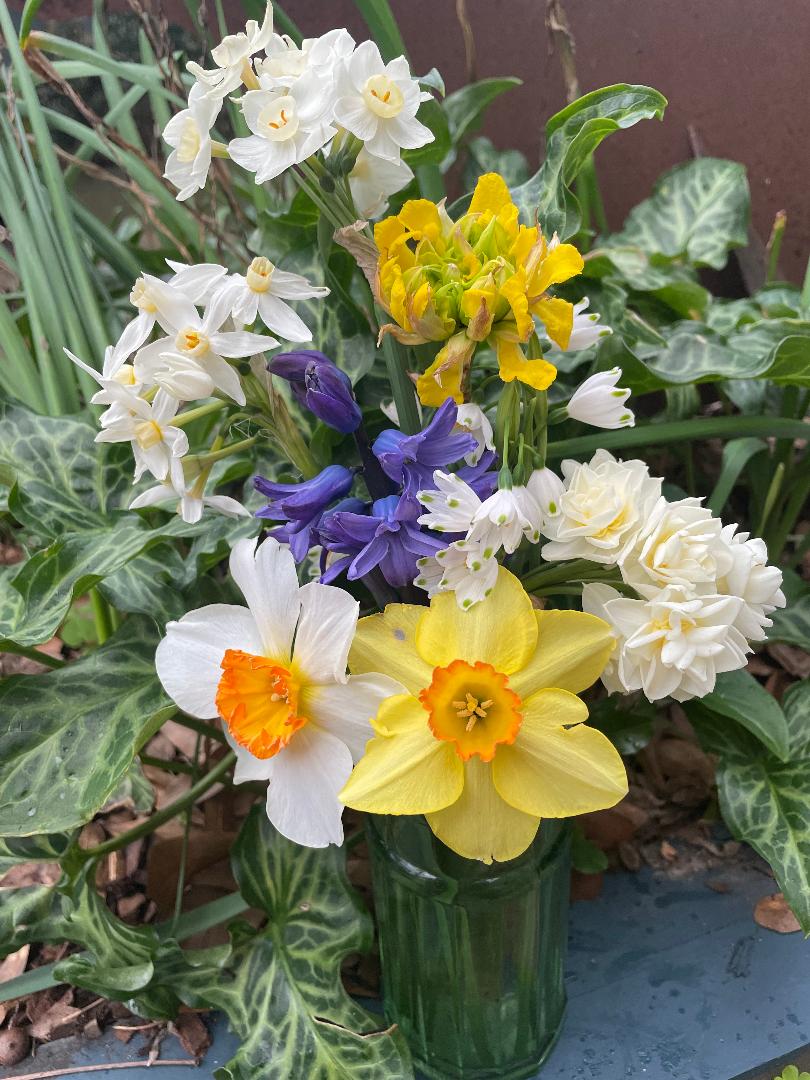Everyone thinks their garden problems are worse than mine
Published 10:39 am Sunday, February 19, 2023
|
Getting your Trinity Audio player ready...
|
If this winter has shown me anything, it is that nearly everyone thinks their garden problems are worse than mine. Wailing about their losses, they don’t understand that I feel their pain through my own grief.
But I’m not letting it get me down. Not being one to wring my hands wishing for spring, I subscribe to the “Gather ye rosebuds while ye may” philosophy of doing what I can to enjoy the here and now; yeah, things could be better, but understanding they could also be much worse, I stoically accept both the good and the bad, and keep on gardening.
In fact, this week I amused and cheered up most of my neighbors when, instead of cutting off the brown foliage, I spray painted a couple and a bowling ball. They’ll be sheared in a week or two, but for now, nothing says winter merriment like cherry red sago palms and ornamental grasses, beside colorful glass bottle trees!
Not to say my garden wasn’t hit hard. In a column I wrote nearly two months ago from my winter garden in England where I had been since early December, I predicted that I’d come home to plant revenants, horticultural zombies looking haggard till warmer weather shows if they will still be with us or not.
But my heart sank when I saw the actual damage. That historically early freeze caught plants before they had their normal weeks of cold acclimation, the gradual “hardening off” process in which they develop antifreeze-like tissue. They were caught blissfully basking in warm sunshine the day before that exceptional Arctic blast.
I was expecting to find mounds of foliar mush showing where the summer-growing cannas, bananas, and elephant ears are planted, but I was surprised to lose normally cold-hardy pansies, snapdragons, dusty miller, rosemary, and dwarf agaves. The kale made it, a few violas are peeking back out, and my office reeks from the vaseful of antique paperwhite and jonquil daffodils I cut yesterday.
Worse thing is how azaleas, gardenias, ligustrum, sweet olive, Indian hawthorn, loropetalum, cleyera, aspidistra (cast iron plant), Asiatic jasmine, and even nandinas have browned out or shed their leaves. An easy check on if the plants are dead or alive is to scratch the bark and look for living, green tissue underneath, which says those parts have a chance to sprout out. Some already are, as anyone looking at their roses, hydrangeas, and figs can see.
But that may not tell the whole story. My neighbors’ azaleas and pittosporum had their bark split bark from sap freezing and bursting through, which is a real killer because even if the top parts sprout out, the stems can’t transport water up from roots and by summer the leafy tops will dry out and die. So, check for this (it will be very obvious) and if you see any, prune the plants below that to save them. Drastic, but usually works.
And yeah, I feel your pain. I just cut my magnificent confederate/star jasmine, the pride of my front arbor, to the ground because its bark was split wide open. Fingers crossed it will come back.
Depressing? Frustrating? Yep. But gardening is a proactive hobby, and we roll with the punches. So, after some cleaning up, a bit of normal winter pruning (roses and hydrangeas need it, even if they are already sprouting out), I am planting stuff. Already replaced pansies and dusty miller to get me through until spring. Sowing seed for colorful lettuces, starting pepper plants in my sunroom.
Done with my spray painting, but it sure cheered me up.
Felder Rushing is a Mississippi author, columnist, and host of the “Gestalt Gardener” on MPB Think Radio. Email gardening questions to rushingfelder@yahoo.com.






